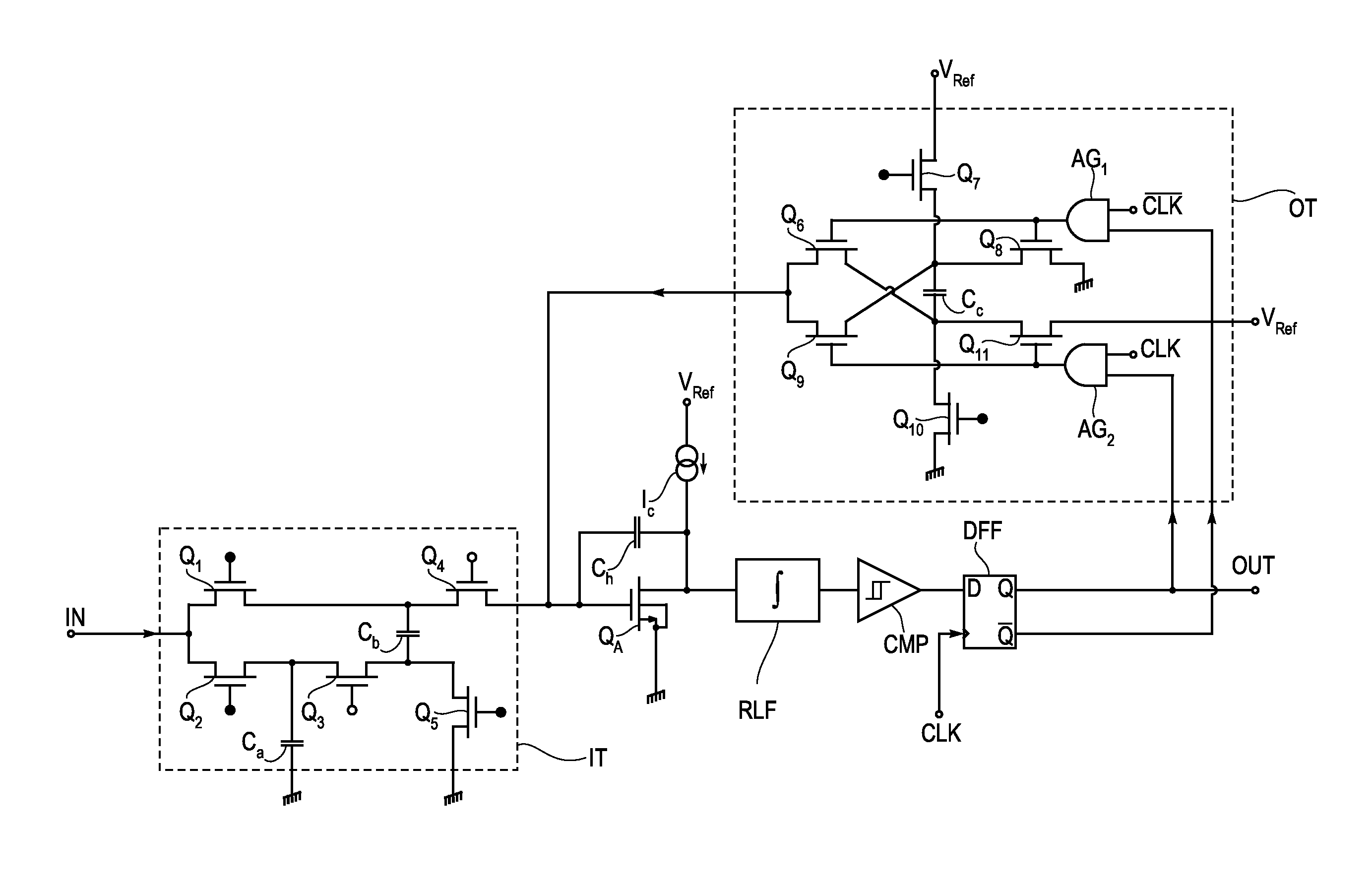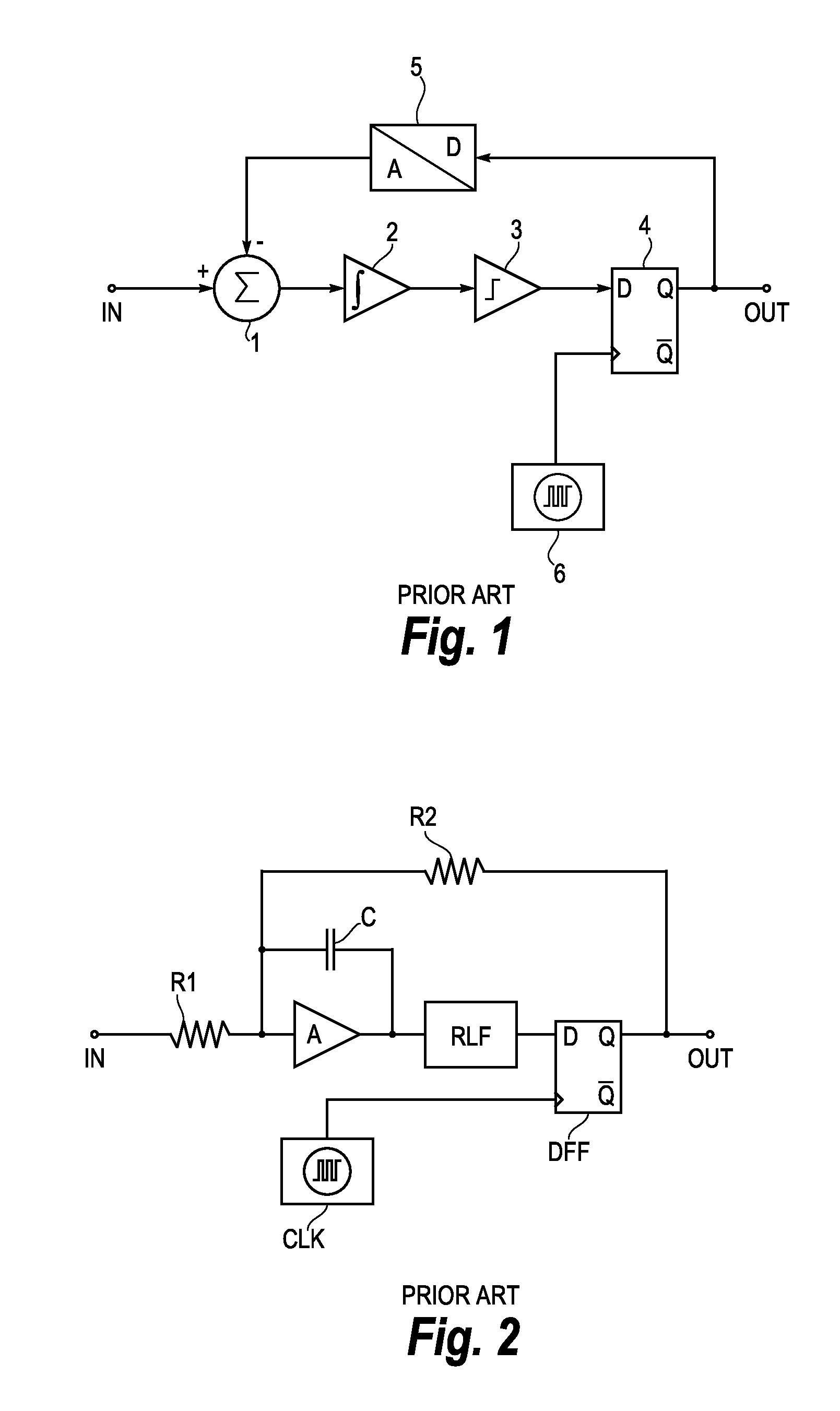Input converter for a hearing aid and signal conversion method
a technology of input converter and signal conversion method, which is applied in the field of analogtodigital input signal converter in digital hearing aids, can solve the problem that the converter clock rate in this example has to be 64, and achieve the effects of reducing the contribution of relative amplifier noise to the amplified signal, facilitating implementation, and optimizing the impedan
- Summary
- Abstract
- Description
- Claims
- Application Information
AI Technical Summary
Benefits of technology
Problems solved by technology
Method used
Image
Examples
Embodiment Construction
[0034]FIG. 1 shows a block schematic of a prior art delta-sigma A / D converter comprising an input terminal IN, a subtraction point 1, an integrator 2, a comparator 3, a D-flip-flop 4, a 1-bit digital-analog converter 5, a clock generator 6, and an output terminal OUT. An analog signal presented to the input terminal IN is fed to the subtraction point 1 where the output signal from the 1-bit D / A converter 5 is subtracted from the input signal, generating an error signal. The difference signal from the subtraction point 1 is fed to the input of the integrator 2 for generating an integral of the difference signal from the subtraction point 1. The output signal from the integrator 2 is presented to the input of the comparator 3 for generating a logical “one”-level whenever the integral signal exceeds a predetermined threshold limit set by the comparator 3, and a logical “zero”-level whenever the output signal from the integrator 2 falls below the predetermined threshold. This logical si...
PUM
 Login to View More
Login to View More Abstract
Description
Claims
Application Information
 Login to View More
Login to View More - R&D
- Intellectual Property
- Life Sciences
- Materials
- Tech Scout
- Unparalleled Data Quality
- Higher Quality Content
- 60% Fewer Hallucinations
Browse by: Latest US Patents, China's latest patents, Technical Efficacy Thesaurus, Application Domain, Technology Topic, Popular Technical Reports.
© 2025 PatSnap. All rights reserved.Legal|Privacy policy|Modern Slavery Act Transparency Statement|Sitemap|About US| Contact US: help@patsnap.com



